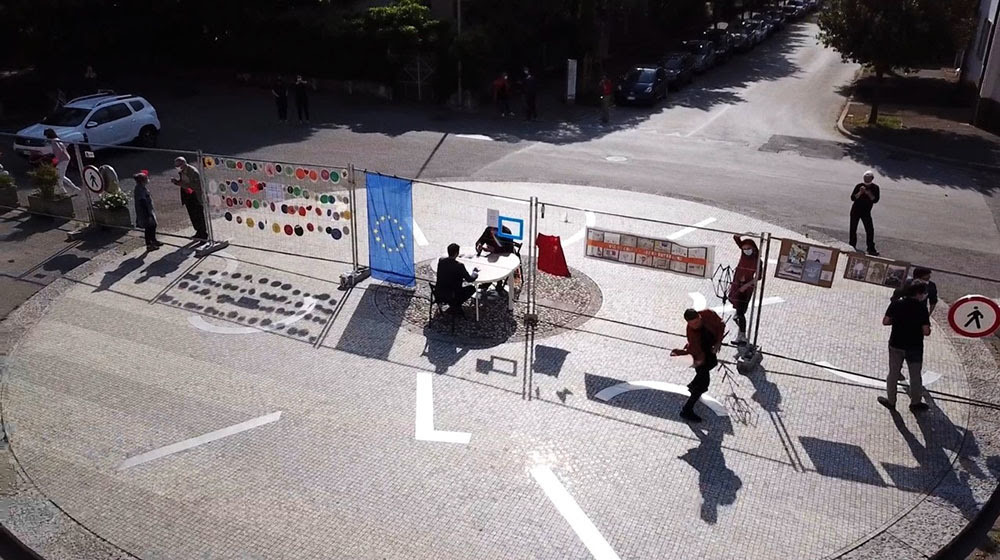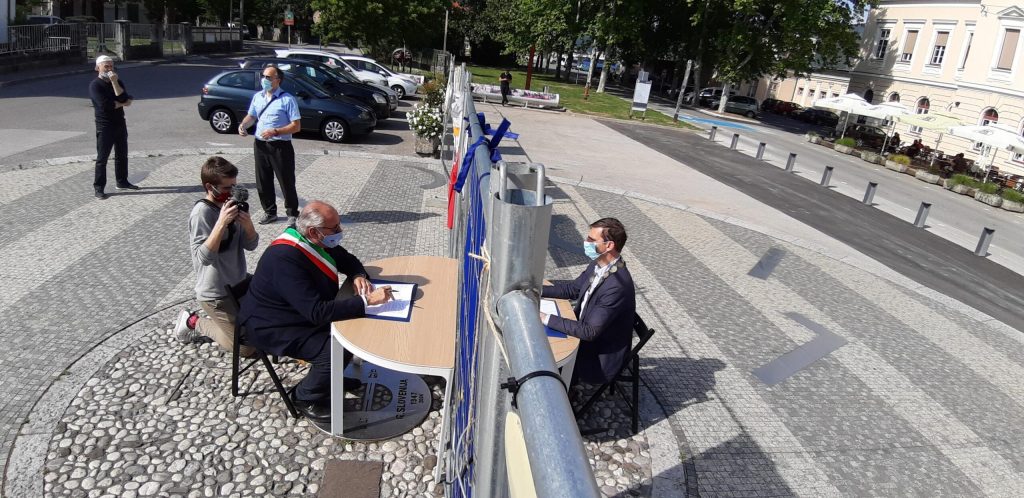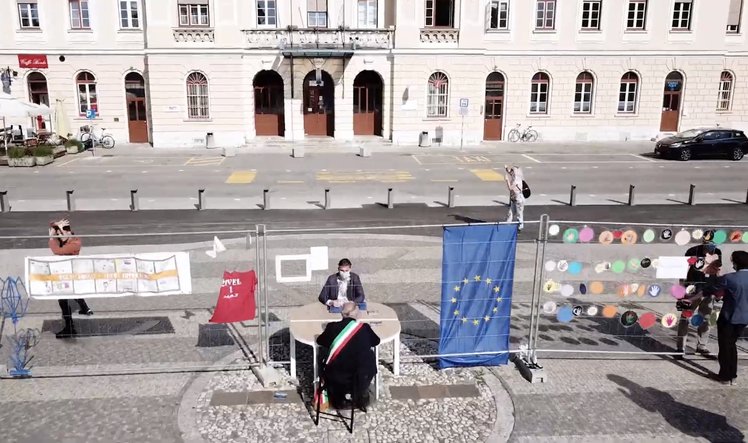Overcoming Borders for a Borderless Future

Written by: Klemen Miklavič
Photo Credit: Maja Murenc
Is the EU genuinely borderless? For travelers within the Schengen Agreement zone[1], it might seem so. For the youth in this zone, the memory of border controls, customs, and long queues is either distant or non-existent. But do borders truly belong only in the past? The firsthand experiences of Nova Gorica and Gorica/Gorizia[2] paint a different picture.
In a previous article spotlighting Nova Gorica and Gorizia, I explored an intriguing concept—a vision as an innovative policy tool with the potential to legitimize and implement impactful policies. This vision aimed to unite the strengths of both sides of the Italian-Slovenian border, envisioning a cross-border European region centered around Nova Gorica and Gorizia. Despite EU and Schengen memberships, the persistent existence of this border remains a stumbling block, impeding collaborative efforts. Overcoming these hurdles demands forward-thinking political solutions to navigate the complexities of state bureaucracies.
COVID-19 and the Hasty Government Response
This article delves into a vivid example showcasing the resilient nature of borders in European social and political reality: the handling of the Coronavirus pandemic. The sudden outbreak created an unprecedented situation. Governments lacked adequate knowledge and protocols, leading to a frantic search for countermeasures. The border closure emerged as a quick, albeit disruptive, solution—resulting in the implementation of fences, barricades, and strict entry requirements.
The decision to close borders, made swiftly by national governments, disrupted the lives of locals living within the integrated reality of border regions. The only open crossing, situated 7 km south of the interconnected urban area, caused turmoil for cross-border workers, families, farmers, and individuals reliant on essential services across the border. This led to families being separated, hindered access to schools and medical care, and caused traffic congestion.
To grasp the severity, imagine sudden barriers across the streets and squares of cities like Graz, Skopje, or Lyon. This turmoil evoked memories for elderly individuals who endured the division of lands post-World War II—a situation Europe should never let recur.
From Improvisation to Innovative Local Action
Local leadership in these cities, likely the sole public authorities fully cognizant of the dire situation, took initiative amidst the absence of inter-state communication. Resourcefulness and innovation became paramount in this crisis. Cooperation between the municipalities, civil protection units, health institutions, firemen, charities, and various organizations played a pivotal role. The mayors maintained continuous contact, even meeting physically along the border fence. Their collective push pressured governments in Ljubljana and Rome to relax border restrictions, enabling those with obligations to cross in the urban area.
Beyond the challenges faced and the subsequent response, a concerning risk emerged in public perception. The COVID-19 border blockade, initially enforced by the Slovene government, was a reaction to distressing scenes from north Italian cities like Bergamo, depicting overwhelmed hospitals and funerals. In Gorizia, this move felt like a symbolic isolation, lacking solidarity during a crucial time. This perceived lack of support posed a threat to the shared vision uniting Nova Gorica and Gorizia. This setback coincided with the cities vying for the European capital of culture, intensifying doubts and mistrust among citizens.
Responding swiftly, both city administrations tackled this issue head-on. They emphasized their joint efforts and solidarity through strong public communication. Media coverage captured powerful images of locals connecting along the fence, exchanging goods, celebrating, engaging in sports, and simply conversing. Sometimes, the two mayors even held meetings across an improvised table bridging the fence.

This proactive communication instilled optimism and upheld trust in the shared goal of creating a unified European cross-border region.

Reflecting on Borders: A Call for Support
Unfortunately, the use of the border in COVID-19 case was not the last. Very recently the border controls were re-introduced as a response to the pressing migration challenges, once again disrupting people’s daily lives. Luckily this time no fences were erected, also thanks to the activity of the mayors.
The failure of national governments to coordinate and consider the local realities amid the border closure underscores the lingering emphasis on national boundaries in the European mindset. Perhaps this signifies an opportune moment to redefine European integration. Instead of solely prioritizing major economic ventures of the past, it’s crucial to spotlight the daily lives of citizens residing within the intricate network of border regions.
(1)An agreement between European states that in effect eased the border crossing. In practice there are no permanent border controls between the states that acceded to the Schengen agreement (some countries carry out random checks on their borders).
(2)The official name of the town appears in two languages due to the two language groups living in it (the Italian majority and a Slovene minority). For the purpose of avoiding the congestion of the text only the name Gorizia will be used.
This is the second in a series of blog entries written by Klemen Miklavič, member of the ACT NOW Mayors’ Network.

